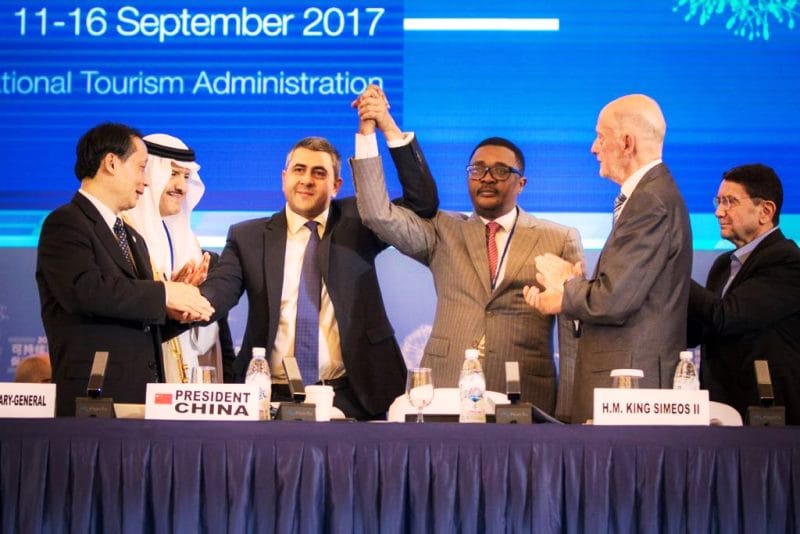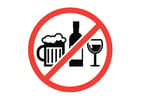“Greening the planet” topics have gripped the media with interesting highlights including confused measurement standards applied by/to destinations, narratives that are readily available, promotion of excellence and innovation leaders, or new and fresh stories on sustainability.
Year 2007 was a banner year for sustainable tourism. It brought an inner-fire burning slowly in the media and later reached a crescendo with more stories being written about nature conservation in 2008. Last year, the press saw a variety of green applications and best practices. Media also witnessed an explosion of green stories and a deeper focus on Greenland: its melting ice caps, polar magnification effects and polar changes noticed to have affected the entire planet as seen with major changes in temperatures of 1.4 degrees around the globe and 4.5 degrees closer to the poles.
“So you want to experience climate change? Go to Greenland. Due to the phenomenon taking place in Greenland, the destination that used to promote dog-sledding and seal hunting now promotes packages in fishing and sea kayaking. Adventure travel in Greenland has changed immensely. While there are few ice-based activities, there’s more sea kayaking because there is now more sea ice,” said Paul Bennett, writer for National Geographic Adventure and co-founder of Context Travel, the organizer of walking seminars for travelers in eight cities worldwide at the ASTA’s TheTradeShow held recently in Orlando, Florida.
Tourism has been growing at a 9.5 percent rate per year worldwide and sustainable tourism has been growing at a rate closer to 25 percent with two-thirds of all American travelers saying they expect hotels to do more to protect the environment and local cultures. As a result, every tour company calls itself green in an effort to appeal to eco-conscious travelers.
The travel media has been focusing on carbon issues. Stewardship and tourism installations become a focus as the tourism industry evolves; stewardships for many projects have been a major concern for green travel business and green media. Impacts on local cultures/ the broadening of the cultures and how local tourism shareholders can participate ensure that tourism is giving back and is creating foundations for local culture and communities.
On stewardship, majority of the tourism development worldwide is set in pristine landscapes. “Look for tourism that takes care of the woods, or clean-up projects (such as the Everest Expeditions that removed trash bottles or the clean-up project such as Thames 21), conservation projects (such as Lapa Rios in Costa Rica or Kapawi) or giving-back programs (such as Lindblad or Intrepid), said the Context Travel founder.
On following-up socio-economic impact, the press would look at the total impact of sustainable tourism efforts, including a well-thought out and articulated approach to local shareholders, partnerships and profit sharing (Kapawi), avoidance of exploitation (Masai), and crowds. Yes crowds.
Little has been written about it, but excessive crowds milling into monuments/museums in Europe e.g. of the Mona Lisa, temples and tombs in Egypt, the mausoleum e.g. the Taj Mahal etc. actually speed up deterioration of the tourist sites. “We are not talking about not traveling but the effective control of crowd visitations and the flow of traffic,” said Bennett.
Bennett shows dismay for the cruise tourism industry saying it is incredibly polluting. “Cruise ship tourism in Venice is incredibly damaging to the environment in Venice for where can garbage go? Venice cannot absorb garbage. That is why an average Venetian has a limit of a sack of garbage per day,” he said.
Green travel is an easy target for “greenwashing,” which is what Bennett calls the attempt to use green credentials, like buying carbon credits, and saying a lot of nonsense or lies to promote high-impact, extractive tourism as sustainable and destination-friendly. Many companies pretend to be green when they are not really green. They greenwash.
Green-oriented travel agents and travel press should actually check these tourism businesses off a long laundry list of unsubstantial claims including hotel towel washing, buying carbon-credits without actually reducing one’s footprint, “ghost foundations” out there who don’t really work for anyone’s carbon offset, tricky PR ploys and a lack of transparency. For this reason, it is always wise to consult the monitoring agencies, think tanks and certification companies who have developed criteria and programs for verifying the credentials of green tourism enterprises. The more reliable ones include the International Ecotourism Society (venerable), the Sustainable Travel International (effective), Green Globe (popular) and awards programs such as Conde Nast’s, said Bennett.
The press is looking for hot new angles including tech breakthroughs such as low-carbon frontiers trips (long-haul on alternative fuels), applying sustainable tourism precepts to new areas, moving beyond charities and voluntourism to create ongoing relations between travelers and destinations, investigative journalism approaches to the true impact of resorts and big hotels, and the unmasking of luxury adventures and impact thereof.
“The media is always looking for the big story. Carbon is the green elephant. Carbon is the SUV of the travel industry and media is constantly looking for solution and big stories such as Virgin Atlantic’s bio-fuel test flight in spring 2008 over the Atlantic. One’s carbon footprint traveling cross Atlantic is much bigger than one’s daily travel to and from work. A transatlantic flight contributes 150 tons of carbon, same as driving 500,000 miles; tourism is growing exponentially. So watch what you say or do,” tipped Bennett.
WHAT TO TAKE AWAY FROM THIS ARTICLE:
- “Look for tourism that takes care of the woods, or clean-up projects (such as the Everest Expeditions that removed trash bottles or the clean-up project such as Thames 21), conservation projects (such as Lapa Rios in Costa Rica or Kapawi) or giving-back programs (such as Lindblad or Intrepid), said the Context Travel founder.
- Green travel is an easy target for “greenwashing,” which is what Bennett calls the attempt to use green credentials, like buying carbon credits, and saying a lot of nonsense or lies to promote high-impact, extractive tourism as sustainable and destination-friendly.
- On following-up socio-economic impact, the press would look at the total impact of sustainable tourism efforts, including a well-thought out and articulated approach to local shareholders, partnerships and profit sharing (Kapawi), avoidance of exploitation (Masai), and crowds.






















